https://en.wikipedia.org/wiki/Reconstruction_(architecture)?wprov=srpw1_119
Lithography of the Moorish Castle, a theater built in Moorish Architecture. Location was Frederiksberg, Denmark
https://en.wikipedia.org/wiki/Moorish_Revival_architecture
British industrial architecture has been created, mainly from 1700 onwards, to house industries of many kinds in Britain, home of the Industrial Revolution in this period. Both the new industrial technologies and industrial architecture soon spread worldwide. As such, the architecture of surviving industrial buildings records part of the history of the modern world.
Some industries were immediately recognisable by the functional shapes of their buildings, as with glass cones and the bottle kilns of potteries. The transport industry was supported first by the growth of a network of canals, then of a network of railways, contributing landmark structures such as the Pontcysyllte Aqueduct and the Ribblehead Viaduct.
New materials made available in large quantities by the newly-developed industries enabled novel types of construction, including reinforced concrete and steel. Industrial architects freely explored a variety of styles for their buildings, from Egyptian Revival to medieval castle, English country house to Venetian Gothic. Others sought to impress with scale, such as with tall chimneys as at the India Mill, Darwen. Some directly celebrated the modern, as with the "heroic"[2] Power House, Chiswick, complete with statues of "Electricity" and "Locomotion". In the 20th century, long white "By-pass modern" company headquarters such as the Art Deco Hoover Building were conspicuously placed beside major roads out of London.
https://en.wikipedia.org/wiki/British_industrial_architecture
| Caroline era | |||
|---|---|---|---|
| 1625 – 1642 (1649) | |||
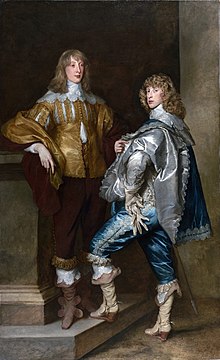 | |||
| Monarch(s) | Charles I | ||
| |||
| Periods in English history |
|---|
|
|
| Timeline |
The Caroline era is the period in English and Scottish history named for the 24-year reign of Charles I (1625–1649). The term is derived from Carolus, the Latin for Charles.[1] The Caroline era followed the Jacobean era, the reign of Charles's father James I & VI (1603–1625), overlapped with the English Civil War (1642–1651), and was followed by the English Interregnum until The Restoration in 1660. It should not be confused with the Carolean era which refers to the reign of Charles I's son King Charles II.[2]
The Caroline era was dominated by growing religious, political, and social discord between the King and his supporters, termed the Royalist party, and the Parliamentarian opposition that evolved in response to particular aspects of Charles's rule. While the Thirty Years' War was raging in continental Europe, Britain had an uneasy peace, growing more restless as the civil conflict between the King and the supporters of Parliament worsened.
Despite the friction between King and Parliament dominating society, there were developments in the arts and sciences. The period also saw the colonisation of North America with the foundation of new colonies between 1629 and 1636 in Carolina, Maryland, Connecticut and Rhode Island. Development of colonies in Virginia, Massachusetts, and Newfoundland also continued. In Massachusetts, the Pequot War of 1637 was the first major armed conflict between New England settlers and a Native American people.
https://en.wikipedia.org/wiki/Caroline_era
https://en.wikipedia.org/wiki/Architectural_Association_School_of_Architecture
https://en.wikipedia.org/wiki/White-throated_sparrow
Kasivisvesvara Temple, Lakkundi
Landscape architecture is the design of outdoor areas, landmarks, and structures to achieve environmental, social-behavioural, or aesthetic outcomes.[2] It involves the systematic design and general engineering of various structures for construction and human use, investigation of existing social, ecological, and soil conditions and processes in the landscape, and the design of other interventions that will produce desired outcomes.
The scope of the profession is broad and can be subdivided into several sub-categories including professional or licensed landscape architects who are regulated by governmental agencies and possess the expertise to design a wide range of structures and landforms for human use; landscape design which is not a licensed profession; site planning; stormwater management; erosion control; environmental restoration; parks, recreation and urban planning; visual resource management; green infrastructure planning and provision; and private estate and residence landscape master planning and design; all at varying scales of design, planning and management. A practitioner in the profession of landscape architecture may be called a landscape architect, however in jurisdictions where professional licenses are required it is often only those who possess a landscape architect license who can be called a landscape architect.
https://en.wikipedia.org/wiki/Landscape_architecture
Kent | |
|---|---|
| Motto: "Invicta" | |
 | |
| Coordinates: 51°12′N 0°42′E | |
| Sovereign state | United Kingdom |
| Constituent country | England |
| Region | South East |
| Established | Ancient |
| Time zone | UTC±00:00 (Greenwich Mean Time) |
| • Summer (DST) | UTC+01:00 (British Summer Time) |
| Members of Parliament | List of MPs |
| Police | Kent Police |
| Ceremonial county | |
| Lord Lieutenant | Philip Sidney |
| High Sheriff | Mrs Remony Millwater[1] (2020/21) |
| Area | 3,736 km2 (1,442 sq mi) |
| • Ranked | 10th of 48 |
| Population (2021) | 1,846,478 |
| • Ranked | 5th of 48 |
| Density | 494/km2 (1,280/sq mi) |
| Ethnicity | 93.7% White (89.1% White British)[2] |
| Non-metropolitan county | |
| County council | Kent County Council |
| Executive | Conservative |
| Admin HQ | Maidstone |
| Area | 3,544 km2 (1,368 sq mi) |
| • Ranked | 8th of 26 |
| Population | 1,581,555 |
| • Ranked | 1st of 26 |
| Density | 446/km2 (1,160/sq mi) |
| ISO 3166-2 | GB-KEN |
| ONS code | 29 |
| GSS code | E10000016 |
| ITL | UKJ42 |
| Website | www |
| Districts | |
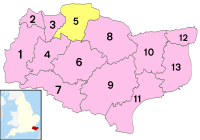 Districts of Kent Unitary County council area | |
| Districts | |
Kent is a county in South East England and one of the home counties. It borders Greater London to the northwest, Surrey to the west and East Sussex to the southwest, and Essex to the north across the estuary of the River Thames; it faces the French department of Pas-de-Calais across the Strait of Dover. The county town is Maidstone. It is the fifth most populous county in England, the most populous non-metropolitan county and the most populous of the home counties.
https://en.wikipedia.org/wiki/Kent
Holkham Hall (/ˈhoʊkəm/ or /ˈhɒlkəm/[1]) is an 18th-century country house near the village of Holkham, Norfolk, England, constructed in the Neo-Palladian style for the 1st Earl of Leicester (of the fifth creation of the title)[2][3] by the architect William Kent, aided by Lord Burlington.
Holkham Hall is one of England's finest examples of the Palladian revival style of architecture, and the severity of its design is closer to Palladio's ideals than many of the other numerous Palladian style houses of the period. The Holkham Estate was built up by Sir Edward Coke, the founder of his family's fortune. He bought Neales manor in 1609, though never lived there, and made many other purchases of land in Norfolk to endow to his six sons. His fourth son, John, inherited the land and married heiress Meriel Wheatley in 1612. They made Hill Hall their home, and by 1659, John had complete ownership of all three Holkham manors. It is the ancestral home of the Coke family, who became Earls of Leicester.
The interior of the hall is opulent, but by the standards of the day, simply decorated and furnished. Ornament is used with such restraint that it was possible to decorate both private and state rooms in the same style, without oppressing the former.[4] The principal entrance is through the Marble Hall, which is in fact made of pink Derbyshire alabaster; this leads to the piano nobile, or the first floor, and state rooms. The most impressive of these rooms is the Saloon, which has walls lined with red velvet. Each of the major state rooms is symmetrical in its layout and design; in some rooms, false doors are necessary to fully achieve this balanced effect.
https://en.wikipedia.org/wiki/Holkham_Hall
Wilton House is an English country house at Wilton near Salisbury in Wiltshire, which has been the country seat of the Earls of Pembroke for over 400 years. It was built on the site of the medieval Wilton Abbey. Following the dissolution of the monasteries, Henry VIII presented Wilton Abbey and its attached estates to William Herbert, 1st Earl of Pembroke.
The present Grade I listed house is the result of rebuilding after a 1647 fire, although a small section of the house built for William Herbert survives; alterations were made in the early 19th and early 20th centuries. The house stands in gardens and a park which are also Grade I listed. While still a family home, the house and grounds are open to visitors during the summer months.
William Herbert, 1st Earl of Pembroke
William Herbert, 1st Earl of Pembroke, the scion of a distinguished family in the Welsh marches, was a favourite of King Henry VIII. Following a recommendation to Henry by King Francis I of France, whom Herbert had served as a soldier of fortune, he was granted arms. In 1538, he married Anne Parr, daughter of Sir Thomas Parr of Kendal and sister of the future queen consort Catherine Parr (1543–1547) and Sir William Parr, 1st Baron Parr of Kendal (later Marquess of Northampton).[1][2]
Following the dissolution of the monasteries, Henry presented Wilton Abbey and its attached estates to Herbert. The granting of such an estate was an accolade and evidence of his position at court. The first grants, dated March and April 1542, include the site of the late monastery, the manor of Washerne adjoining, and also the manors of Chalke. These were given to "William Herbert, Esquire and Anne his wife for the term of their lives with certain reserved rents to King Henry VIII."[3] When Edward VI re-granted the manors to the family, it was explicitly "to the aforenamed Earl, by the name of Sir William Herbert, knight, and the Lady Anne his wife and the heirs male of their bodies between them lawfully begotten."[4]
Herbert built Wilton House, probably on the same site as the abbey, between 1544 and 1563.[5] According to John Aubrey's Brief Life, Herbert was briefly dispossessed under Mary I of England:
"In Queen Mary's time, upon the return of the Catholique religion, the nunnes came again to Wilton Abbey; and this William, Earl of Pembroke, came to the gate which lookes towards the court by the street, but now is walled up, with his cappe in his hand, and fell upon his knees to the Lady Abbess and nunnes, crying peccavi. Upon Queen Mary's death, the Earl came to Wilton (like a tygre) and turned them out crying, 'Out, ye whores! to worke, to worke—ye whores, goe spinne!"[6]
Hans Holbein
It has long been claimed, without proof, that Hans Holbein the Younger re-designed the abbey as a rectangular house around a central courtyard, which is the core of the present house. Holbein died in 1543, so his designs for the new house would have had to be very speedily executed. However, the highly ornamented entrance porch to the new mansion, removed from the house around 1800 and later transformed into a garden pavilion, is to this day known as the "Holbein Porch"[7] – a perfect example of the blending of the older Gothic and the brand-new Renaissance style.[citation needed]
Whoever the architect, a great mansion arose, an early prodigy house by a courtier of the Tudors. Today only one other part of the Tudor mansion survives: the great tower in the centre of the east facade. With its central arch (once giving access to the court beyond) and three floors of oriel windows above, the tower is slightly reminiscent of the entrance at Hampton Court. It is flanked today by two wings in a loose Georgian style, each topped by an Italianate pavilion tower.
Inigo Jones
The Tudor house built by William Herbert, 1st Earl of Pembroke, in 1551 lasted 80 years. King James, Anne of Denmark, and Prince Henry stayed at Wilton in November 1603 and gave an audience to two Venetian ambassadors, Nicolò Molin and Piero Duodo.[8]
On the succession of the 4th Earl in 1630, he decided to pull down the southern wing and erect a new complex of staterooms in its place. It is now that the second great name associated with Wilton appears: Inigo Jones.
The architecture of the south front is in severe Palladian style, described at the time as in the "Italian Style;" built of the local stone, softened by climbing shrubs, it is quintessentially English to our eyes today. While the remainder of the house is on three floors of equal value in the English style, the south front has a low rusticated ground floor, almost suggesting a semi-basement. Three small porches project at this level only, one at the centre, and one at each end of the facade, providing small balconies to the windows above. The next floor is the piano nobile, at its centre the great double-height Venetian window, ornamented at second floor level by the Pembroke arms in stone relief. This central window is flanked by four tall sash windows on each side. These windows have low flat pediments. Each end of the facade is defined by "corner stone" decoration giving a suggestion that the single-bay wings project forward. The single windows here are topped by a true pointed pediment.
Above this floor is a further almost mezzanine floor, its small unpedimented windows aligning with the larger below, serve to emphasise the importance of the piano nobile. The roofline is hidden by a balustrade. Each of the terminating 'wings' is crowned by a one-storey, pedimented tower resembling a Palladian pavilion. At the time, his style was an innovation. Just thirty years earlier, Montacute House, exemplifying the English Renaissance, had been revolutionary; only a century earlier, the juxtaposing mass of wings that is Compton Wynyates, one of the first houses to be built without complete fortification, had just been completed and was considered modern.
Attributing the various architectural stages can be difficult, and the degree to which Inigo Jones was involved has been questioned. Queen Henrietta Maria, a frequent guest at Wilton, interrogated Jones about his work there. At the time (1635) he was employed by her, completing the Queen's House at Greenwich. It seems at this time Jones was too busy with his royal clients and did no more than provide a few sketches for a mansion, which he then delegated for execution to an assistant Isaac de Caus (sometimes spelt 'Caux'), a Frenchman and landscape gardener from Dieppe.
A document that Howard Colvin found at Worcester College library in Oxford in the 1960s confirmed not only de Caus as the architect, but that the original plan for the south facade was to have been over twice the length of that built; what we see today was intended to be only one of two identical wings linked by a central portico of six Corinthian columns. The whole was to be enhanced by a great parterre whose dimensions were 1,000 feet by 400 feet. This parterre was in fact created and remained in existence for over 100 years. The second wing however failed to materialise – perhaps because of the 4th Earl's quarrel with King Charles I and subsequent fall from favour, or the outbreak of the Civil War; or simply lack of finances.
It is only now that Inigo Jones may have taken a firmer grip on his original ideas. Seeing De Caus' completed wing standing alone as an entirety, it was considered too plain – De Caus' original plan was for the huge facade to have a low pitched roof, with wings finishing with no architectural symbols of termination. The modifications to the completed wing were of a balustrade hiding the weak roof line and Italianate, pavilion-like towers at each end. The focal point became not a portico but the large double height Venetian window. This south front (illustration above), has been deemed an architectural triumph of Palladian architecture in Britain, and it is widely believed that the final modifications to the work of De Caus were by Inigo Jones himself.
Within a few years of the completion of the new south wing in 1647, it was ravaged by fire. The seriousness of the fire and the devastation it caused is now a matter of some dispute. The architectural historian Christopher Hussey has convincingly argued that it was not as severe as some records have suggested. What is definite is that Inigo Jones now working with another architect John Webb (his nephew by marriage to Jones' niece) returned once again to Wilton. Because of the uncertainty of the fire damage to the structure of the house, the only work that can be attributed with any degree of certainty to the new partnership is the redesign of the interior of the seven state-rooms contained on the piano nobile of the south wing; and even here the extent of Jones' presence is questioned. It appears he may have been advising from a distance, using Webb as his medium.
The state rooms
The seven state rooms contained behind the quite simple Mannerist south front of Wilton House are equal to those in any of the great houses of Britain. State rooms in English country houses were designed, named, and reserved for the use of only high-ranking members of state as house-guests, often a monarch and his consort. State rooms usually occupy an entire facade of a house, and are nearly always of an odd number because the largest and most lavish room (at Wilton the famed Double Cube Room) is placed at the centre of the facade, with symmetrical sequences of smaller (but still very grand) rooms leading from the central room to either side, ending at the state bedrooms, which are at either end of the facade. The central salon was a gathering place for the court of the honoured guest. The comparatively smaller rooms in between the central room and the state bedrooms were designated for the sole use of the occupant of each bedroom, and would have been used for private audiences, withdrawing rooms, and dressing rooms. They were not for public use.
In most English houses today the original intention has been lost, and these rooms have usually become a meaningless succession of drawing rooms; this is certainly true at both Wilton House and Blenheim Palace. The reason for this is that, over time, the traditional occupants of the state bedrooms began to prefer the comfort of a warmer, more private bedroom on a quiet floor with an en-suite bathroom. By the Edwardian Period, large house-parties had adapted the state rooms to use as salons for playing bridge, dancing, talking, and generally amusing themselves.
The magnificent state rooms at Wilton, designed by Inigo Jones and one or another of his partners, are:
- The Single Cube Room: This room is a complete cube 30 ft long (9 m), wide and high, has gilded and white pine panelling, and is carved from dado to cornice. The white marble chimney piece was designed by Inigo Jones himself. The room has a painted ceiling, on canvas, by the Mannerist Italian painter Cavalier D'Arpino, representing Daedalus and Icarus. This room, hung with paintings by Lely and Van Dyck, is the only room thought to have survived the fire of 1647, and thus the only remaining interior of Jones and De Caus.
- The Double Cube Room: The great room of the house. It is 60 ft long (18 m), 30 ft wide (9 m) and 30 ft high (9 m). It was created by Inigo Jones and Webb circa 1653. The pine walls, painted white, are decorated with great swags of foliage and fruit in gold leaf. The gilt and red velvet furniture complements the collection of paintings by Van Dyck of the family of Charles I and the family of his contemporary Earl of Pembroke. Between the windows are mirrors by Chippendale and console tables by William Kent. The coffered ceiling, painted by Thomas de Critz, depicts the story of Perseus. Here again is another anomaly which makes one question the true involvement of Jones: the great Venetian window, centrepiece of the south front and centrepiece of the double cube room, is not the dead centre of the room's outer wall; the other windows in the room are not symmetrically placed; and the central fireplace and Venetian window are not opposite each other as the proportions of a room designed as an architectural feature in itself would demand.
- The Great Anteroom: Before the modifications to the house in 1801, a great staircase of state led from this room to the courtyard below: this was the entrance to the state apartments. Here hangs one of Wilton's greatest treasures: the portrait of his mother by Rembrandt.
- The Colonnade Room: This was formerly the state bedroom. The series of four gilded columns at one end of the room would have given a theatrical touch of importance to the now-missing state bed. It is furnished today with 18th-century furniture by William Kent. The room is hung with paintings by Reynolds and has a ceiling painted in an 18th-century theme of flowers, monkeys, urns, and cobwebs.
Other rooms are:
- The Corner Room: The ceiling in this room, representing the conversion of Saint Paul, was painted by Luca Giordano. The walls of the room are covered in red damask and adorned with small paintings by, among others, Rubens and Andrea del Sarto.
- The Little Ante Room: The white marble fireplace in this room, with inserts of black marble, is almost certainly by Inigo Jones. The panels in the ceiling were painted by Lorenzo Sabbatini (1530–1577) and therefore are far older than this part of the house; again there are paintings by Van Dyck and Teniers.
- The Hunting Room: This room, not shown to the public, is used as a private drawing room by the Herbert family. It is a square room with white panelling and gilded mouldings. The greatest feature of the room is the set of panels depicting hunting scenes by Edward Pierce painted circa 1653. These panels are set into the panelling rather than framed in the conventional sense.
Inigo Jones was a friend of the Herbert family. It has been said that Jones' original studying in Italy of Palladio and the other Italian masters was paid for by the 3rd Earl, father of the builder of the south front containing the state rooms. There are in existence designs for gilded doors and panels at Wilton annotated by Jones. It seems likely that Jones originally sketched some ideas for de Caus, and following the fire conveyed through Webb some further ideas for tidying the house and its decorations. Fireplaces and decorative themes can be executed at long distance. The exact truth of the work by Jones will probably never be known.
In 1705, following a fire, the 8th Earl rebuilt some of the oldest parts the house, making rooms to display his newly acquired Arundel marbles, which form the basis for the sculpture collection at Wilton today. Following this Wilton remained undisturbed for nearly a century.
19th century and James Wyatt
The 11th Earl (1759–1827) called upon James Wyatt in 1801 to modernise the house, and create more space for pictures and sculptures. The final of the three well-known architects to work at Wilton (and the only one well documented) was to prove the most controversial. His work took eleven years to complete.
James Wyatt was an architect who often employed the neo-classical style, but at Wilton for reasons known only to architect and client he used the Gothic style. Since the beginning of the 20th century his work at Wilton has been condemned by most architectural commentators. The negative points of his 'improvements' to modern eyes are that he swept away the Holbein porch, reducing it to a mere garden ornament, replacing it with a new entrance and forecourt. This entrance forecourt created was entered through an 'arc de triumph' which had been created as an entrance to Wilton's park by Sir William Chambers circa 1755. The forecourt was bounded by the house on one side, with wings of fake doors and windows extending to form the court, all accessed by Chambers's repositioned arch, crowned by a copy of the life-size equestrian statue of Marcus Aurelius. While not altogether displeasing as an entrance to a country house, the impression created is more of a hunting estate in Northern France or Germany.
The original Great Hall of the Tudor house, the chapel and De Caus-painted staircase to the state apartments were all swept away at this time. A new Gothic staircase and hall were created in the style of Camelot. The Tudor tower, now the last remnant of William Herbert's house, escaped unscathed except for the addition of two 'medieval' statues at ground floor level.
There was however one huge improvement created by Wyatt – the cloisters. This two-storeyed gallery which was built around all four sides of the inner courtyard, provided the house with not only the much needed corridors to link the rooms, but also a magnificent gallery to display the Pembroke collection of classical sculpture. Wyatt died before completion, but not before he and Lord Pembroke had quarrelled over the designs and building work. The final touches were executed by Wyatt's nephew Sir Jeffry Wyatville. Today nearly two hundred years later Wyatt's improvements do not jar the senses as much as they did those of the great architectural commentators James Lees-Milne and Sir Sacheverell Sitwell writing in the 1960s. That Wyatt's works are not in the same league of style as the south front, and the Tudor tower, is perhaps something for future generations to judge.
Secondary rooms
Wilton is not the largest house in England by any means: compared to Blenheim Palace, Chatsworth, Hatfield and Burghley House, its size is rather modest. However, aside from the magnificent state rooms, a number of secondary rooms are worthy of mention:
- The Front Hall: redesigned by Wyatt, access is gained from this room to the cloisters through two Gothic arches. The room is furnished with statuary; the dominating piece a larger than life statue of William Shakespeare designed by William Kent in 1743. It commemorates an unproved legend that Shakespeare came to Wilton and produced one of his plays in the courtyard.
- The Upper Cloisters: designed by Wyatt but completed circa 1824 by Wyatville in the Gothic style contain neoclassical sculpture, and curios such as a lock of Queen Elizabeth I's hair, and Napoleon I's dispatch box and paintings by the Brueghel brothers.
- The Staircase: Designed by Wyatt, it replaces the muralled state staircase swept away during the 'improvements'. The imperial staircase is lined with family portraits by Lely. Also hanging here is a portrait of Catherine Woronzow, the only sister of 1st Prince Vorontsov and the wife of the 11th Earl; her Russian sleigh is displayed in the cloisters.
- The Smoking Rooms: These rooms are in the wing attributed to Inigo Jones and John Webb linking to the south front. The cornices and doors are attributed to Jones. The larger of the two rooms contains a set of fifty-five gouache paintings of an equestrian theme painted in 1755. The room is furnished with a complete set of bureau, cabinets and break-front bookcases made for the room by Thomas Chippendale.
- The Library: A large book-lined room over 20 yards long, with views to a formal garden and vista leading to the 'Holbein' porch. This is used as a private room and not shown to the public.
- The Breakfast Room: A private small low-ceilinged room on the rustic floor of the south front. In the 18th century this was the house's only bathroom; more of an indoor swimming pool, the sunken plunge pool was heated and the room decorated in the Pompeian style complete with Corinthian columns. Converted by the Russian Countess of Pembroke to a breakfast room circa 1815, it is today wallpapered in a Chinese design, the paper being an exact copy of that used in the original 1815 decoration of the room. The 18th century furniture of a simulated-bamboo, Gothic style gives this private dining room a distinct oriental atmosphere.
Associated buildings
Entrance arch and lodges
The north entrance to the house and the forecourt within it were created by Wyatt c.1801. The centrepiece is an ashlar arch, designed c.1758–62 by Sir William Chambers as a garden feature, and carrying a lead statue (probably of earlier date) of Marcus Aurelius on horseback. The structure has a pair of Corinthian columns at each corner and a dentil cornice, and the inner arch is on Doric columns and 18th-century wrought-iron gates. On each side Wyatt added a single-storey lodge in ashlar, with a balustraded parapet.[9] The whole is Grade I listed.[9]
Former stables
Washern Grange, south of the house and on the other side of the Nadder, is said to be a 1630s rebuilding of an earlier stable block, and incorporates a 14th-century barn which presumably belonged to the abbey. Built in brick with stone dressings and now several dwellings, the complex is Grade I listed.[10] Washern was a manor (Waisel in Domesday Book)[11] and later a suburb of Wilton, which was absorbed into the grounds of Wilton House.[12]
Gardens and grounds
The house is renowned for its gardens. Isaac de Caus began a project to landscape them in 1632, laying out one of the first French parterres seen in England. An engraving of it made the design influential after the royal Restoration in 1660, when grand gardens began to be made again. The original gardens included a grotto and water features.
Palladian Bridge
After the parterre had been replaced by turf, the Palladian Bridge (1736–37, Grade I listed)[13] over the little River Nadder, 90m south of the house, was designed by the 9th Earl in collaboration with architect Roger Morris. Balustraded stairs on each side lead through a pedimented arch into an open pavilion, and the central balustraded span has a high roof supported by a five-bay Ionic colonnade. The design was in part based on a rejected design by Palladio for the Rialto Bridge, Venice.[13]
A copy of the bridge was erected at the much-visited garden of Stowe in Buckinghamshire, and three more were erected: at Prior Park, Bath; Hagley, Worcestershire; and Amesbury Abbey. Empress Catherine the Great commissioned another copy, known as the Marble Bridge, to be set up at the landscape park of Tsarskoye Selo.[14]
Lost settlement
The park includes an area formerly occupied by much of the village of Fugglestone, which was cleared away, including the site of a medieval leper hospital called the Hospital of St Giles.[15]
Recent developments
In the late 20th century, the 17th Earl had a garden created in Wyatt's entrance forecourt, in memory of his father, the 16th Earl. This garden enclosed by pleached trees, with herbaceous plants around a central fountain, has done much to improve and soften the severity of the forecourt.
In 1987 the park and gardens were listed Grade I on the Register of Historic Parks and Gardens of special historic interest.[16]
Today
The house was recorded as Grade I listed in 1951.[5] The house and gardens have been open to the public since that year,[17] usually during the summer months.[18]
Wilton was described by the architectural historian Sir John Summerson in 1964 as:[19][better source needed]
- ...the bridge is the object which attracts the visitor before he has become aware of the Jonesian facade. He approaches the bridge and, from its steps, turns to see the facade. He passes through and across the bridge, turns again and becomes aware of the bridge, the river, the lawn and the façade as one picture in deep recession. ... Standing here he may reflect upon the way in which a scene so classical, so deliberate, so complete, has been accomplished not by the decisions of one mind at one time but by a combination of accident, selection, genius and the tides of taste.
As of 2012, the current earl, William Herbert, 18th Earl of Pembroke, and his family live in the house.[20][21] In 2006, Herbert told The New York Times Magazine that the Wilton estate has around 140 employees. Its 14,000 acres are divided into 14 farms, one of which is run by the estate (the others are rented to tenants) and more than 200 residential properties. Although the house is open to the public, Herbert and his wife occupy about a third of the house privately.[22] Salisbury Racecourse and South Wilts Golf Course are also on the 14,000 acre estate.
In film and television
The house has been used for filming, including: Romance with a Double Bass (1974);[23] Barry Lyndon (1975);[23] Of Mirrors, Paintings and Windows: Spectatorship in Ang Lee’s Sense and Sensibility (1995);[23] The Music Lovers;[23] The Bounty (1984);[23] Treasure Houses of Britain (1985);[24] Blackadder II;[23] The Madness of King George (1994);[23] Mrs Brown (1997);[23] Pride & Prejudice (2005);[25][23] The Young Victoria (2009);[23] Outlander;[23] Tomb Raider (2018);[26][23] The Crown;[23] Emma (2020)[23] and Bridgerton.[27][23]
References
Further reading
- Bold, John, Wilton House and English Palladianism. London, HMSO. 1988. ISBN 0-11-300022-7
- Colvin, Howard, A Biographical Dictionary of British Architects
External links
![]() Media related to Wilton House at Wikimedia Commons
Media related to Wilton House at Wikimedia Commons
- Country houses in Wiltshire
- Grade I listed buildings in Wiltshire
- Grade I listed houses
- Grade I listed parks and gardens in Wiltshire
- Historic house museums in Wiltshire
- Inigo Jones buildings
- Palladian architecture
- 9th-century establishments in England
- Wilton, Wiltshire
- Buildings and structures completed in 871
https://en.wikipedia.org/wiki/Wilton_House
| Georgian era | |
|---|---|
| 1714 – 1830 (1837) | |
 | |
| Including | Regency era |
| Monarch(s) | |
| Leader(s) | |
| |||
| Periods in English history |
|---|
|
|
| Timeline |
The Georgian era was a period in British history from 1714 to c. 1830–1837, named after the Hanoverian kings George I, George II, George III and George IV. The definition of the Georgian era is often extended to include the relatively short reign of William IV, which ended with his death in 1837. The subperiod that is the Regency era is defined by the regency of George IV as Prince of Wales during the illness of his father George III.[2] The transition to the Victorian era was characterized in religion, social values, and the arts by a shift in tone away from rationalism and toward romanticism and mysticism.
The term Georgian is typically used in the contexts of social and political history and architecture. The term Augustan literature is often used for Augustan drama, Augustan poetry and Augustan prose in the period 1700–1740s. The term Augustan refers to the acknowledgement of the influence of Latin literature from the ancient Roman Republic.[3]
The term Georgian era is not applied to the time of the two 20th-century British kings of this name, George V and George VI. Those periods are simply referred to as Georgian.[4]
https://en.wikipedia.org/wiki/Georgian_era
Liverpool | |
|---|---|
 Top: Pier Head and the Mersey Ferry Middle: St George's Hall; the Metropolitan Cathedral; and the Anglican Cathedral Bottom: the Georgian Quarter; and Prince's Dock | |
| Nicknames: | |
| Motto: Deus Nobis Haec Otia Fecit ("God has granted us this ease")[5] | |
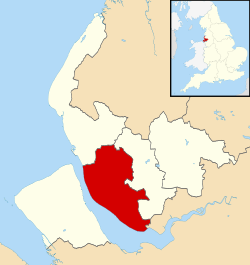 Location within Merseyside | |
| Coordinates: 53°24′27″N 02°59′31″W | |
| Sovereign state | United Kingdom |
| Country | England |
| Region | North West England |
| City region | Liverpool |
| Metropolitan and ceremonial county | Merseyside |
| Historic county | Lancashire |
| Founded | 1207 |
| City Status | 1880 |
| Administrative HQ | Liverpool Town Hall |
| Government | |
| • Type | Metropolitan borough |
| • Body | Liverpool City Council |
| • Leadership | Mayor and Cabinet |
| • Executive | Labour |
| • Mayor of Liverpool City Region | Steve Rotheram |
| • Lord Mayor | Mary Rasmussen |
| • Chief Executive | Tony Reeves |
| Area | |
| • City | 43.2 sq mi (111.8 km2) |
| • Urban | 77.1 sq mi (199.6 km2) |
| • Rank | 203rd |
| Elevation | 230 ft (70 m) |
| Population (2022) | |
| • City | 500,500 |
| • Rank | 10th |
| • Density | 11,528/sq mi (4,346/km2) |
| • Urban | 864,122 (6th) |
| • Urban density | 11,210/sq mi (4,329/km2) |
| • Metro | 2,241,000 (5th) |
| • Ethnicity (2021)[6] | |
Detail | |
| • Religion (2021)[7] |
|---|
Detail | |
| Demonyms | Liverpudlian Scouser |
|---|---|
| Time zone | UTC+0 (Greenwich Mean Time) |
| • Summer (DST) | UTC+1 (British Summer Time) |
| Postcode area | |
| Dialling code | 0151 |
| ISO 3166 code | GB-LIV |
| GSS code | E08000012 |
| NUTS 3 code | UKD72 |
| ONS code | 00BY |
| OS grid reference | SJ3490 |
| Motorways | M62 |
| Major railway stations | Liverpool Central (B) Liverpool Lime Street (A/D) Liverpool Moorfields (D) Liverpool James Street (E) |
| International airports | Liverpool John Lennon (LPL) |
| GDP | £51.5 billion[8] |
| – Per capita | £25,143[8] |
| Councillors | 90 |
| MPs | Maria Eagle (Labour) Kim Johnson (Labour) Dan Carden (Labour) Paula Barker (Labour) Ian Byrne (Labour) |
| Website | www |
Former UNESCO World Heritage Site | |
| Official name | Liverpool – Maritime Mercantile City |
| Criteria | Cultural: (ii), (iii), (iv) |
| Designated | 2004 (18th session) |
| Reference no. | 1150 |
| Region | Europe and North America |
| Delisted | 2021 (44th session) |
Liverpool is a city and metropolitan borough in North West England. With a population of 500,500 in 2022,[9] it is located within the county of Merseyside and is the principal city of the wider Liverpool City Region. Its metropolitan area is the fifth largest in the United Kingdom, with a population of 2.24 million.[10]
https://en.wikipedia.org/wiki/Liverpool
Renaissance Revival architecture (sometimes referred to as "Neo-Renaissance") is a group of 19th century architectural revival styles which were neither Greek Revival nor Gothic Revival but which instead drew inspiration from a wide range of classicizing Italian modes. Under the broad designation Renaissance architecture nineteenth-century architects and critics went beyond the architectural style which began in Florence and Central Italy in the early 15th century as an expression of Renaissance humanism; they also included styles that can be identified as Mannerist or Baroque. Self-applied style designations were rife in the mid- and later nineteenth century: "Neo-Renaissance" might be applied by contemporaries to structures that others called "Italianate", or when many French Baroque features are present (Second Empire).
The divergent forms of Renaissance architecture in different parts of Europe, particularly in France and Italy, has added to the difficulty of defining and recognizing Neo-Renaissance architecture. A comparison between the breadth of its source material, such as the English Wollaton Hall,[1] Italian Palazzo Pitti, the French Château de Chambord, and the Russian Palace of Facets—all deemed "Renaissance"—illustrates the variety of appearances the same architectural label can take.
https://en.wikipedia.org/wiki/Renaissance_Revival_architecture
Top: Saint-Denis:Bottom: Wells Cathedral | |
| Years active | Mid-12th to mid 13th century |
|---|---|
| Country | France and England |
Early Gothic is a term for the first phase of Gothic style, followed by High Gothic and Late Gothic, dividing the whole Gothic era into three periods. It is defined as a style that used some principle elements of Gothic, but not all. Especially, it had no fine tracery. It marks the first phase of a division of Gothic Style into three periods. If it is used for all countries, it has to be regarded that there may be special terms for the styles of single countries, such as Early English in England.
In France, where Gothic style had been initiated, another phasing has been established:
- Gothique primitif (Primary Gothic) or Gothique premier (First Gothic), from short before 1140 until short after 1180, marked by tribunes above the aisles of basilicas.[1][2]
- Gothique classique (Classic Gothic), from the 1180s to the first third of 13th century, marked by basilicas without lateral tribunes and with triforia without windows. Some buildings of this phase, like Chartres Cathedral, have to be subsumed to Early Gothic, others, like the Reims Cathedral and the western parts of Amiens Cathedral, have to be subsumed to High Gothic.
- Gothique rayonnant (Radiant or Shining Gothic), from the second third of 13th century to the first half of 14th century, marked by triforia with windows and a general preference for stained glass instead of stone walls. It forms the greater portion of High Gothic.
- Gothique flamboyant (Flaming Gothic), since mid 14th century, marked by swinging and flaming (that makes the term) forms of tracery.
The term "Early Gothic" should not be extended backward; if Durham Cathedral and other buildings with the first rib vaults in Romanesque walls are subsumed to this style, most of German Late Romanesque architecture would be Early Gothic.
Primary Gothic appeared in northern France in the 130s. In Normandy, it was mixed with regional traditions. In England, it gave the example for Early English architecture. It combined and developed several key elements from earlier styles, particularly from Romanesque architecture, including the rib vault, flying buttress, and the pointed arch, and used them in innovative ways to create structures, particularly Gothic cathedrals and churches, of exceptional height and grandeur, filled with light from stained glass windows. Notable examples of early Gothic architecture in France include the ambulatory and facade of Saint-Denis Basilica; Sens Cathedral (1140); Laon Cathedral; Senlis Cathedral; (1160) and most famously Notre-Dame de Paris (begun 1160).[3]
Early English Gothic was influenced by the French style, particularly in the new choir of Canterbury Cathedral, but soon developed its own particular characteristics, particularly an emphasis for length over height, and more complex and asymmetric floor plans, square rather than rounded east ends, and polychrome decoration, using Purbeck marble. Major examples are the nave and west front of Wells Cathedral, the choir of Lincoln Cathedral, and the early portions of Salisbury Cathedral.[4]
Early Gothic was succeeded in the early 13th century by a new wave of larger and taller buildings, with further technical innovations, in a style later known as High Gothic.[5]
Origins
French Gothic architecture was the result of the emergence in the 12th century of a powerful French state centered in the Île-de-France. King Louis VI of France (1081–1137), had succeeded, after a long struggle, in bringing the barons of northern France under his control, and successfully defended his domain against attacks by the English King, Henry I of England (1100–1135). Under Louis and his successors, cathedrals were the most visible symbol of the unity of the French church and state. During the reign of Louis VI of France (1081–1137), Paris was the principal residence of the Kings of France, the Carolingian era Reims Cathedral the place of coronation, and the Abbey of Saint-Denis became the ceremonial burial place. The King and his successors lavishly supported the construction and enlargement of abbeys and cathedrals.
The Abbot of Saint-Denis, Suger, was not only a prominent religious figure but also first minister to Louis VI and Louis VII. He oversaw the royal administration when the King was absent on the Crusades. He commissioned the reconstruction of the Basilica of Saint-Denis, making it the first and most influential example of the new style in France.[6]
https://en.wikipedia.org/wiki/Early_Gothic_architecture
Châteauesque (or Francis I style,[1] or in Canada, the Château Style[2]) is a Revivalist architectural style based on the French Renaissance architecture of the monumental châteaux of the Loire Valley from the late fifteenth century to the early seventeenth century.
The term châteauesque (literally, "château-like") is credited (by historian Marcus Whiffen) to American architectural historian Bainbridge Bunting,[1] although it can be found in publications that pre-date Bunting's birth. As of 2011, the Getty Research Institute's Art & Architecture Thesaurus includes both "Château Style" and "Châteauesque", with the former being the preferred term for North America.
The style frequently features buildings heavily ornamented by the elaborate towers, spires, and steeply-pitched roofs of sixteenth century châteaux, themselves influenced by late Gothic and Italian Renaissance architecture. Despite their French ornamentation, as a revival style, buildings in the châteauesque style do not attempt to completely emulate a French château. Châteauesque buildings are typically built on an asymmetrical plan, with a roof-line broken in several places and a facade composed of advancing and receding planes.
https://en.wikipedia.org/wiki/Ch%C3%A2teauesque
Federation architecture is the architectural style in Australia that was prevalent from around 1890 to 1915.[3] The name refers to the Federation of Australia on 1 January 1901, when the Australian colonies collectively became the Commonwealth of Australia.
The architectural style had antecedents in the Queen Anne style and Edwardian style of the United Kingdom, combined with various other influences like the Arts and Crafts style.[3] Other styles also developed, like the Federation Warehouse style, which was heavily influenced by the Romanesque Revival style. In Australia, Federation architecture is generally associated with cottages in the Queen Anne style, but some consider that there were twelve main styles that characterized the Federation period.[4]
Definition and features
The Federation period overlaps the Edwardian period, which was so named after the reign of King Edward VII (1901–1910); however, as the style preceded and extended beyond Edward's reign, the term "Federation architecture" was coined in 1969.[5]
Federation architecture has many similarities to Edwardian Baroque architecture; however, there are significant differences that distinguish the Federation architecture style from the Edwardian Baroque architecture style, particularly due to the embracing of Australiana themes and the use of the verandah in domestic settings. Australian flora and fauna are prominently featured, and stylised images of the New South Wales waratah,[6]: page:11 flannel flower, Queensland firewheel tree, and other flowers, and the kangaroo,[6]: page:44 kookaburra,[6]: page:11 and lyrebird,[6]: page:10 were common. The Coat of Arms,[6]: page:10 and rising sun, representing a new dawn in the country of Australia, also appeared regularly on gables.
Many[citation needed] Federation buildings, both residential and non-residential, are listed on the Register of the National Estate because of their heritage values.
Gardens and garden architecture
Gardens of the period were complex and contained many elements—generally a wider variety of plants than is seen in contemporary plantings, pergolas, rose arches, gazebos and summerhouses.[6]: page:82 Wooden lattice fences were used to partition parts of the garden off, particularly the front from the more private back.[6]: page:81 Garden paths could be straight or gently curved, and often edged with glazed edging tiles or bricks, and made of tiles, packed gravel or bricks. patterns for brick paving include stretcher bond, herringbone and basketweave.[6]: page:80 Asphalt and concrete were not used.
Plants were selected to produce year-round colour and interest in the local climate conditions. Initially, evergreen trees were used, but the denseness of shade led to increasing popularity of deciduous trees such as Jacaranda, flowering plum and peppercorn.[6]: page:86 Palms often framed the garden vista, and the native Cootamundra wattle was popular, as were shrubs such as camellias and standard roses.[6]: page:86 Conservatories contained begonias and Adiantum ferns.[6]: page:86
Styles
There are twelve styles that predominated in the Federation period:
- Federation Academic Classical
- Federation Free Classical
- Federation Filigree
- Federation Anglo-Dutch
- Federation Romanesque
- Federation Gothic
- Federation Carpenter Gothic
- Federation Warehouse
- Federation Queen Anne
- Federation Free Style
- Federation Arts and Crafts
- Federation Bungalow
Residential architecture
Of the twelve Federation styles, there are four that were mainly used in residential architecture. They are Federation Queen Anne style, Federation Filigree style, Federation Arts and Craft style, and Federation Bungalow style.
Federation Queen Anne
The Federation Queen Anne style was designed to embrace the outdoor lifestyles of the Australian people. Most homes have asymmetric gables, white-painted window frames, front verandas with decorative timber features, tiling on the patio floor and entry paths. The brickwork is usually a deep red or dark brown, often with a mix of the two. The roofs are typically terracotta tiles with decorative gables (sometimes adorned with finials), motifs, timber features, tall chimneys and fretwork. Decorative leadlight windows are also common, as are circular windows (known as bulls-eye windows). Federation homes also have decorative internal features in the plasterwork, high ceilings and timber features.
Some outstanding examples are West Maling, Penshurst Avenue, Penshurst, New South Wales; Turramurra Ingleholme, Boomerang Street, Turramurra, New South Wales (former home of architect John Sulman); and Caerleon, Bellevue Hill, the first Queen Anne home in Australia. The Federation Queen Anne style was the most popular residential style in Australia between 1890 and 1910.
Caerleon, Bellevue Hill, New South Wales, first Queen Anne home in Australia
Amesbury, Ashfield, New South Wales. Built c.1888.
Hillcrest, Launceston, Tasmania
Federation Queen Anne mansion in South Yarra, Victoria
'Vallambrosa', Appian Way, Burwood, New South Wales, Federation Queen Anne style
Federation Filigree
The Federation Filigree style is common in the hotter parts of Australia, especially in the north, since it is designed to create shade while allowing for the free flow of air. It is a common sight in Queensland and is sometimes known as the Queensland style. Some outstanding examples are Belltrees House, Scone, New South Wales; private home, Roderick Street, Ipswich, Queensland; and terrace of homes, east side of High Street, Millers Point, New South Wales.
'Derry', a good example of Federation Filigree in Neutral Bay, New South Wales
A Filligree Queen Anne style house in Woollahra, New South Wales
Dilhorn House, Perth
Federation Filigree, Beecroft, New South Wales
Federation Arts and Crafts
The Federation Arts and Crafts style had its origins in England, where architects were reacting to the impersonal nature of the Industrial Revolution. Crafts and handiwork were emphasised to give architecture the "human touch". These influences were absorbed into Federation Australia, where the resulting buildings were generally small-scale to medium-scale and predominantly residential. Outstanding examples are Glyn, Kooyong road, Toorak, Victoria; The Crossways, Martin Road, Centennial Park, New South Wales; and Erica, Appian Way, Burwood, New South Wales.
Federation Bungalow
The Federation Bungalow style was the Australian response to the bungalow style that was developed in America by people like Gustav Stickley. It can be seen as a transition phase between the Federation Queen Anne style and the California Bungalow style that took on later. Stylistically, it exploited the qualities of the bungalow while frequently retaining the flair and idiosyncrasies of the Queen Anne style, although usually in simplified form. Outstanding examples are Nee Morna, Nepean Highway, Sorrento, Victoria; Blythewood, Beecroft Road, Cheltenham New South Wales; and The Eyrie, Fox Valley Road, Wahroonga, New South Wales.
Federation cottage, Beecroft, New South Wales
Federation Bungalow, Randwick, New South Wales
Federation Bungalow, Bondi, New South Wales, with Italianate touches
Federation Revival
During the early-1990s, many of the design elements that characterised the Federation architecture of old were popularised in mainstream architecture. This Federation revival form is also known as "mock Federation" or "faux Federation". The style was widespread within the realm of residential housing (especially in new development suburbs) and for apartment buildings; however, smaller shopping centres and other public buildings also made use of the revival style that retained widespread popularity until the early 2000s. Suburbs of Sydney that developed in the 1990s—such as Cherrybrook, Castle Hill, and Menai—are notable in the sense that large tracts of these developments contain almost exclusively Federation revival homes.[7]
The construction of Federation revival architecture varied little from that of other basic styles, with the Federation elements merely forming the facade and decorating elements of the building. For example, the typical brick and roof tile construction, hexagonal turrets, ornate gable work, finials, prominent verandah, steep pitched roofs, and faceted bay windows served to parallel the traditional Federation architecture.
Federation revival home in Wahroonga, Sydney
Federation revival home in Roseville, Sydney
Federation revival apartments in Lindfield, Sydney
Federation revival apartments in Miranda, Sydney (c. 1995)
Federation revival house in Kingsford, Sydney
Federation revival house in Kensington, Sydney
A house in Blacktown, Greater Western Sydney
A house in Hornsby, Sydney
Roseville, Sydney
Non-residential architecture
Federation non-residential buildings can be in any of the twelve styles. The following gallery shows some examples of non-residential buildings.
Former bank building, Oxford Street, Darlinghurst, New South Wales (Federation Free Classical)
Mary Immaculate Church, Waverley, New South Wales (Federation Academic Classical)
Our Lady of the Sacred Heart Convent, Kensington, New South Wales (Federation Gothic)
Fire Station, Darlinghurst, New South Wales (Federation Free Style, designed by Walter Liberty Vernon)
Fremantle Markets, Fremantle, Western Australia (Federation Romanesque)
St. Mary's Church, Townsville, Queensland (Federation Carpenter Gothic)
Salvation Army building, Brisbane, Queensland (Federation Filigree style)
Former Farmers and Graziers Building, Ultimo, New South Wales (Federation Warehouse style)
Federation architects
Notable[citation needed] Federation architects in Australia include:
- Rodney Alsop
- Harold Desbrowe Annear
- Albert Edmund Bates (Rockhampton, Queensland)
- Hillson Beasley
- A. L. Buchanan
- Henry Budden CBE
- Walter Butler
- Hugh Hamilton Campbell (Warwick, Queensland)
- Claude William Chambers (Qld)
- John James Clark
- Robin Dods
- George Thomas Eaton (Rockhampton, Queensland)
- Richard Gailey (Brisbane, Queensland)
- George Brockwell Gill (Ipswich, Queensland)
- Carlyle Greenwell
- William Hodgen (Toowoomba, Queensland)
- Sir Talbot Hobbs
- John Horbury Hunt
- Edward Jeaffreson Jackson (Sydney to 1908)
- Howard Joseland
- George Sydney Jones
- Henry Hardie Kemp
- Harry Marks (Toowoomba)
- George McRae
- Thomas Pollard Sampson
- Sir John Sulman
- George Temple-Poole
- Beverley Ussher
- Walter Liberty Vernon
- B. J. Waterhouse
See also
- Australian architectural styles
- Australian residential architectural styles
- Australian non-residential architectural styles
- Appian Way, Burwood
- List of Australian historic homesteads
References
Notes
- Rod Fisher (2016). Queenslanders: Their Historic Timbered Homes. Boolarong Press. pp. 33–. ISBN 978-1-925522-23-5.
Bibliography
- Archi Centre - The Federation House
- Australian Heritage Architecture
- The Heritage of Australia, Macmillan Company, 1981 ISBN 0-333-33750-6
External links
https://en.wikipedia.org/wiki/Federation_architecture
https://en.wikipedia.org/wiki/Quai_Fran%C3%A7ois_Mitterrand
| Tuileries Palace | |
|---|---|
Palais des Tuileries | |
 Palais de Justice, Conciergerie and Pont au Change around 1900 https://en.wikipedia.org/wiki/Pont_au_Change Musée d'Orsay and Pont Royal https://en.wikipedia.org/wiki/Pont_Royal The third gate of this name, built in 1635 (engraving by Adam Pérelle).
Place Vendôme, Paris 
View to the west with the domed Church of the Daughters of the Assumption visible on the south side of the Rue Saint-Honoré
Statue of Napoleon by Antoine-Denis Chaudet Communards pose with the statue of Napoléon I from the toppled Vendôme column, 1871 https://nikiyaantonbettey.blogspot.com/2023/05/05-22-2023-2152-pages-in-category.html The Double Cube Room in 1904 Recent developmentsThe east front of Wilton, photographed by Queen Alexandra circa 1907; the central tower is all that remains of the Tudor house Federal-style architecture is the name for the classical architecture built in the United States following the American Revolution between c. 1780 and 1830, and particularly from 1785 to 1815, which was influenced heavily by the works of Andrea Palladio with several innovations on Palladian architecture by Thomas Jefferson and his contemporaries. Jefferson's Monticello estate and several federal government buildings, including the White House, are among the two most prominent examples of buildings constructed in Federal style. Federal style is also used in association with furniture design in the United States of the same time period. The style broadly corresponds to the classicism of Biedermeier style in the German-speaking lands, Regency architecture in Britain, and the French Empire style. It may also be termed Adamesque architecture. The White House and Monticello were setting stones for what Federal Architecture has become. In the early United States, the founding generation consciously chose to associate the nation with the ancient democracies of Greece and the republican values of Rome. Grecian aspirations informed the Greek Revival, lasting into the 1850s. Using Roman architectural vocabulary,[2] the Federal style applied to the balanced and symmetrical version of Georgian architecture that had been practiced in the American colonies' new motifs of neoclassical architecture as it was epitomized in Britain by Robert Adam, who published his designs in 1792. https://en.wikipedia.org/wiki/Federal_architecture Federation architecture is the architectural style in Australia that was prevalent from around 1890 to 1915.[3] The name refers to the Federation of Australia on 1 January 1901, when the Australian colonies collectively became the Commonwealth of Australia. The architectural style had antecedents in the Queen Anne style and Edwardian style of the United Kingdom, combined with various other influences like the Arts and Crafts style.[3] Other styles also developed, like the Federation Warehouse style, which was heavily influenced by the Romanesque Revival style. In Australia, Federation architecture is generally associated with cottages in the Queen Anne style, but some consider that there were twelve main styles that characterized the Federation period.[4] https://en.wikipedia.org/wiki/Federation_architecture
|







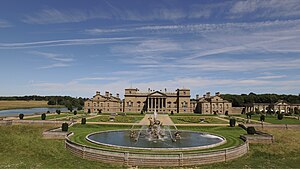





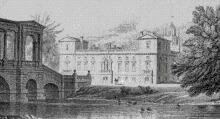

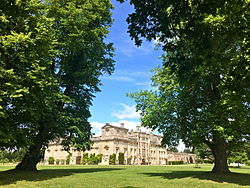
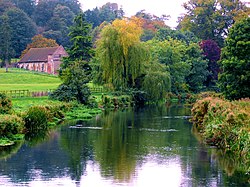



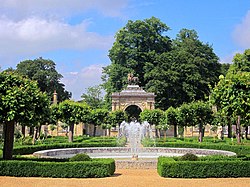








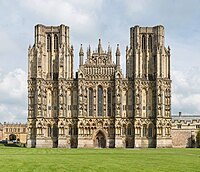
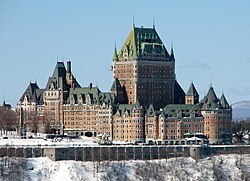
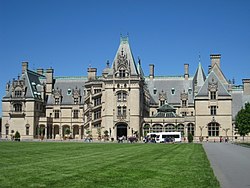


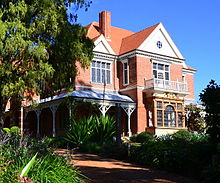








































No comments:
Post a Comment